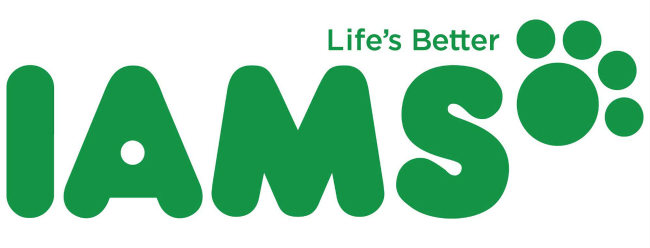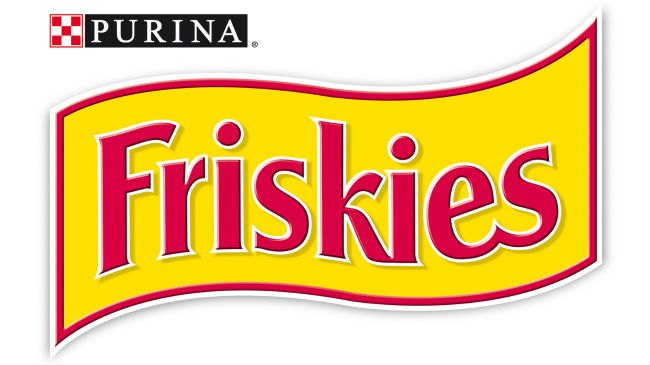Do you have an active feline friend? In order to ensure your cat remains healthy and active, it is important that you feed it on cat foods that encourage an active lifestyle. Your cat needs foods with sufficient proteins and probiotics that support its active nature while at the same time strengthening its muscles and supplying it with the energy it requires.
According to the Iams Cat Food Company, the Iams Healthy Naturals Adult with Wholesome Chicken is a cat food that offers your cat all the above benefits. This cat food is claimed to contain natural vegetables, fruits, grains and proteins to supply your cat’s system with all the nutrients it needs to remain healthy and active.
Is this the most suitable cat food for your feline?
The ingredients in this cat food
Chicken, Chicken By-Product Meal, Corn Meal, Brewers Rice, Ground Whole Grain Barley, Chicken Meal, Dried Beet Pulp, Dried Egg Product, Natural Flavor, Sodium Bisulfate, Potassium Chloride, Fish Oil (preserved with mixed Tocopherols, a source of Vitamin E), Animal Fat (preserved with mixed Tocopherols, a source of Vitamin E), DL-Methionine, Dried Apple Pomace, Dried Carrots, Brewers Dried Yeast, Fructooligosaccharides, Dried Peas, Calcium Carbonate, Choline Chloride, Dried Spinach, Dried Tomatoes, Vitamin E Supplement, Vitamins (Niacin, Ascorbic Acid, Vitamin A Acetate, Calcium Pantothenate, Biotin, Thiamine Mononitrate (source of vitamin B1), Pyridoxine Hydrochloride (source of vitamin B6), Vitamin B12 Supplement, Riboflavin Supplement (source of vitamin B2), Inositol, Vitamin D3 Supplement, Folic Acid), Minerals (Zinc Oxide, Manganese Sulfate, Copper Sulfate, Potassium Iodide, Cobalt Carbonate), Rosemary Extract.
An overview of the first five ingredients
Chicken
Chicken is a very popular ingredient for pet food and in this case, they are referring to whole chicken. This is a very high quality meat source and we are pleased to see it listed. However, whole chicken loses about 80% of its content during the cooking process since the majority of whole chicken is water. After the cooking process is complete, the amount of whole chicken remaining is substantially reduced. Therefor, while whole chicken is a great source of meat protein, this ingredient alone is not enough to provide sufficient levels of meat protein in a cats diet.
Chicken By-Product Meal
While this ingredient does provide a high amount of meat protein, this meat source is considered to be of lower quality than many other meat sources. Chicken By-Product Meal is produced through a process of cooking, drying and separation of fats and proteins from animal carcasses. It contains a dehydrated combination of meat (or cuts or parts) including lungs, spleen, kidneys, brain, livers, blood, bone, necks, undeveloped eggs and intestines. Usually, by-products are the “left overs” that can’t be used for human food consumption. The greatest fault of this ingredient is the same trait that makes it so affordable and so commonly found in pet foods. The unpredictability of what might (or might not) be included.
Corn Meal
Considered a low quality ingredient, corn meal is usually used as a “filler ingredient” but provides almost no nutritional value to cats. This ingredient is also a known allergy causing ingredient for many cats. We aren’t all that thrilled to see this ingredient listed.
Brewers Rice
Brewers rice is the small milled fragments of rice kernels that have been separated from the larger kernels of milled rice. It is a processed rice product that is missing many of its nutrients, but does provide a source of carbohydrates. It is a by-product of rice milling and considered a lower quality filler ingredient usually used in lower priced cat food blends. Usually, brewers rice is used to make rice flour, but if the quality is too poor for rice flour, it will then be sold to pet food or dairy feed companies. For many cats, this ingredient can cause allergies or digestion issues. Most cats will not have any problems processing this food, but it’s not one of the better ingredients, either.
Ground Whole Grain Barley
With barley being a starchy carbohydrate, it supplies healthy nutrients such as fiber to the cat. Barley also gives your cat sugar level stability. Ground or pearled barley is produced from whole barley seeds that have been scoured to remove the seed hull and bran. This is a common ingredient in weight control pet foods due to its slow digestibility, starch, and soluble fibers.
Other ingredients in this cat food
Chicken Meal
Chicken meal is ground up chicken meat that has been carefully dried to a moisture level of 10%. The protein content is 65% and the fat level is 12%. Many pet owners feel that chicken is a superior ingredient to chicken meal. It would seem logical that feeding a pet a whole, non-rendered chicken would be good. However, whole chicken still contains its moisture content prior to cooking and since whole chicken consists of about 80% moisture, after the cooking process is over there isn’t much left. With chicken meal, the moisture was removed prior to cooking. That means, chicken meal actually has a much higher protein percentage and provides far more beneficial nutrients to your cats than whole chicken. Meals consist of meat and skin, with or without the bones, but exclusive of feathers/hair, heads, feet, horns, entrails etc. and have the proper calcium/phosphorus ratio required for a balanced diet. It’s also important to note the quality difference between “chicken by-product meal” and “chicken meal.” While we do take exception to chicken by-products, chicken meal is actually a very high quality and nutritious ingredient. We are happy to see this listed.
Fish Oil (preserved with mixed Tocopherols, a source of Vitamin E)
Fish oil is oil derived from the tissues of oily fish. It contains a high amount of healthy fatty acids like omega-3 and omega-6. The oil is usually made from fish such as salmon, herring, mackerel, anchovies, and sardines. Mixed tocopherols are a combination of the four tocopherols present in vitamin E: delta tocopherol, alpha tocopherol, gamma tocopherol and beta tocopherol. Some mixed tocopherol supplements may not contain all four tocopherols but instead might combine two or three in various concentrations. Vitamin E is extremely important for cats so if a cat food blend does not include enough vitamin E naturally, they will add it with forms of tocopherol. There are no widespread problems with either of these ingredients.
Animal Fat (preserved with mixed Tocopherols, a source of Vitamin E)
Animal fat provides essential fatty acids, energy, and fat soluble vitamins. This ingredient can also support a healthy skin and coat. Unfortunately, when it comes to fat sources, animal fat is considered to be a lower quality ingredient. This is because it is an unnamed fat source. Usually, we like to see a named fat source (such as “chicken fat”). In this case, we are forced to guess what animal or animals this fat source comes from. Animal fat, also called tallow, is a product of rendering. In the rendering process, pieces, parts, and even whole animals are put through a gigantic grinder, then boiled in vats for 30 minutes to several hours. High heat is necessary to kill bacteria, viruses, molds, and other pathogens. The boiling process also allows the fat to separate and float to the top, where it is skimmed off for use in cosmetics, pharmaceuticals, industrial lubricants, and, of course, pet food.
Tocopherol is a naturally occurring chemical element found in a variety of foods. It is commonly called vitamin E in a generic sense, as vitamin E substances are made up of tocopherol and similar elements. The main purpose of this ingredient is to provide a natural preservative for the food. Since this is a natural preservative, it is generally considered safe.
Is this an ideal formula for cats with food allergies?
This cat food contains several grain based ingredients, which are associated with allergies.
Healthy ingredients that should have been used in the manufacturing of this cat food
Grain free carbohydrates – It’s interesting this ingredient is specifically labeled as “grain free carbohydrates” because for cats, carbs are carbs. Grains have been put in the spotlight lately, but since cats are obligate carnivores, even grain free carbohydrates will have limited nutritional benefit. Some cats have difficulty digesting carbohydrates, so instead of listing these carbs as grain-free, we’d much rather know exactly what is included.
Vegetables – This is a pretty generic ingredient and it can include virtually any vegetable. Because of this, we are unable to properly analyze this ingredient. However, since cats are obligate carnivores, they do not gain much of any nutritional benefit from vegetables. That being said, in nature, cats almost always consume the stomach contents of their prey which usually includes various fruits and vegetables. It’s unfortunate this labeling is so generic as we are unable to vouch for the quality of the vegetables included.
Conclusion
Judging from the ingredients in this cat food, this is yet another poor quality cat food only suitable for cats without food allergies. The inclusion of added flavoring is also a disadvantage for cat owners seeking 100% additive free formulas.




